Note: There is now a newer Novel Coronavirus (2019-nCoV) Situation Report 17.
WHO Novel Coronavirus (2019-nCoV) Situation Report 16
- Belgium reported its first confirmed case of 2019-nCoV acute respiratory disease.
- WHO and partners have developed a global strategic preparedness and response plan, which outlines the public health measures that the international community can provide to support all countries to prepare for and respond to the 2019‑nCoV outbreak. The overall goal of the plan is to stop further transmission of 2019‑nCoV within China and to other countries, and to mitigate the impact of the outbreak in all countries.
- WHO is working with the travel and tourism industry to discuss real and perceived risks experienced in the industry, measures put in place for customers and employees, and challenges faced regarding implementation of the Temporary Recommendations associated with the declaration of a Public Health Emergency of International Concern. In the coming days, WHO will work with the industry to identify solutions to these challenges, within the framework of the International Health Regulations (2005).
Risk Assessment
China: Very High
Regional Level: High
Global Level: High
Coronavirus Situation in Numbers
Globally
- 24554 confirmed (3241 new)
China
- 24363 confirmed (3893 new)
- 3219 severe (431 new)
- 491 deaths (66 new)
Outside of China
- 191 confirmed (32 new)
- 24 countries (1 new)
- 1 death (0 new)
Technical Focus: Strategic Preparedness and Response Plan and Resource Requirements
WHO and partners have developed a global strategic preparedness and response plan, which outlines the public health measures that the international community can provide support to all countries to prepare for and respond to the 2019‑nCoV outbreak. The plan describes what we have learned so far about the virus and translates that knowledge into strategic action that can guide the efforts of all national and international partners when developing context-specific national and regional operational plans.
The overall goal of the strategic preparedness and response plan is to stop further transmission of 2019‑nCoV within China and to other countries, and to mitigate the impact of the outbreak in all countries.
The strategic objectives of the plan are to:
- Limit human-to-human transmission, including reducing secondary infections among close contacts and healthcare workers, preventing transmission amplification events, and preventing further international spread from China;
- Identify, isolate, and care for patients early, including providing optimized care for infected patients;
- Identify and reduce transmission from the animal source;
- Address crucial unknowns regarding clinical severity, extent of transmission and infection, treatment options, and accelerate the development of diagnostics, therapeutics, and vaccines;
- Communicate critical risk and event information to all communities, and counter misinformation;
- Minimize social and economic impact through multisectoral partnerships.
These objectives can be achieved by:
A. Rapidly establishing international coordination to deliver strategic, technical, and operational support through existing mechanisms and partnerships;
B. Scaling up country preparedness and response operations, including strengthening readiness to rapidly identify, diagnose and treat cases; identification and follow-up of contacts when feasible (with priority given to high-risk settings such as healthcare facilities); infection prevention and control in healthcare settings; implementation of health measures for travelers; and awareness raising in the population through risk communication and community engagement.
C. Accelerating priority research and innovation to support a clear and transparent global process to set research and innovation priorities to fast track and scale-up research, development, and the equitable availability of candidate therapeutics, vaccines, and diagnostics. This will build a common platform for standardized processes, protocols, and tools, to facilitate multidisciplinary and collaborative research integrated with the response.
The total estimated resources required to be mobilized by the international community to implement priority public health measures in support of countries to prepare for and respond to 2019-nCoV for this plan is USD 675.5 million. The resource requirement for WHO as part of this plan is USD 61.5 million. The response requirement period is three months, from February 1 to April 30, 2020
Countries, territories or areas with reported confirmed cases of 2019-nCoV, February 5, 2020
| Country/Territory/Area | Confirmed Cases |
|---|---|
| China | 24363 |
| Japan | 33 |
| Thailand | 25 |
| Singapore | 24 |
| Republic of Korea | 18 |
| Australia | 13 |
| Germany | 12 |
| United States of America | 11 |
| Malaysia | 10 |
| Vietnam | 10 |
| France | 6 |
| Canada | 5 |
| United Arab Emirates | 5 |
| India | 3 |
| Philippines | 3 |
| Italy | 2 |
| Russian Federation | 2 |
| United Kingdom | 2 |
| Belgium | 1 |
| Cambodia | 1 |
| Finland | 1 |
| Nepal | 1 |
| Spain | 1 |
| Sri Lanka | 1 |
| Sweden | 1 |
| Total | 24554 |
Recommendations and Advice for the Public
During previous outbreaks due to other coronaviruses (Middle-East Respiratory Syndrome (MERS) and Severe Acute Respiratory Syndrome (SARS), human-to-human transmission occurred through droplets, contact, and fomites, suggesting that the transmission mode of the 2019-nCoV can be similar. The basic principles to reduce the general risk of transmission of acute respiratory infections include the following:
- Avoiding close contact with people suffering from acute respiratory infections.
- Frequent hand-washing, especially after direct contact with ill people or their environment.
- Avoiding unprotected contact with farm or wild animals.
- People with symptoms of acute respiratory infection should practice cough etiquette (maintain distance, cover coughs and sneezes with disposable tissues or clothing, and wash hands).
- Within healthcare facilities, enhance standard infection prevention and control practices in hospitals, especially in emergency departments.
WHO does not recommend any specific health measures for travelers. In case of symptoms suggestive of respiratory illness either during or after travel, travelers are encouraged to seek medical attention and share their travel history with their healthcare provider.

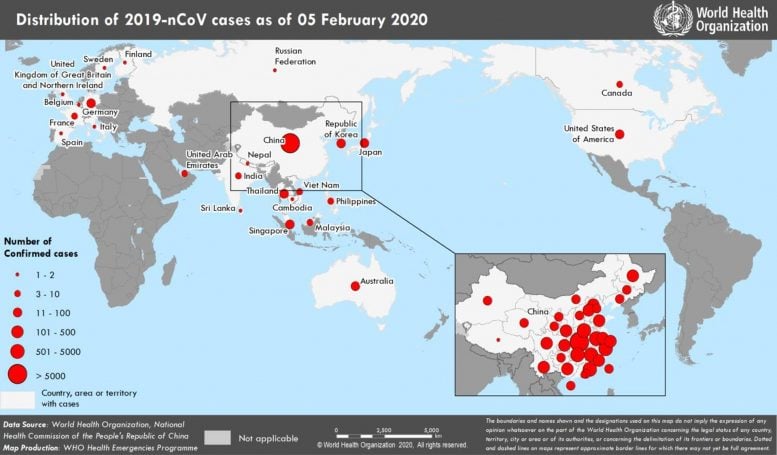
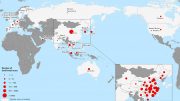
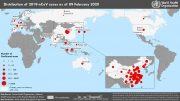
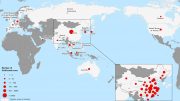
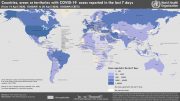
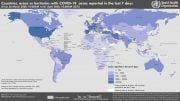
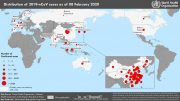
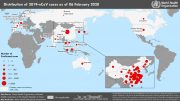
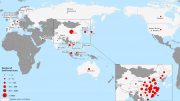
Be the first to comment on "Global Confirmed Coronavirus Infections Reach 24,554 As Deaths Jump to 492"